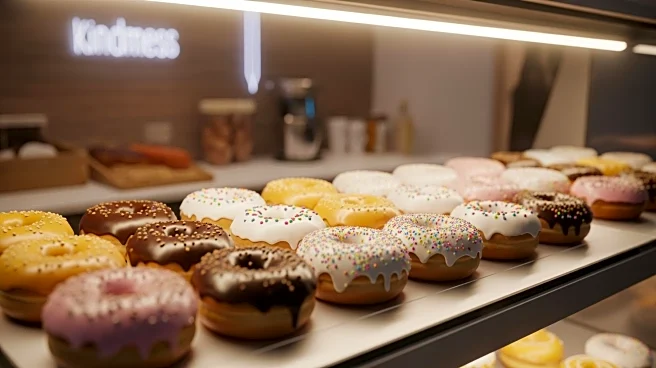What's Happening?
Convenience stores across the U.S. are increasingly turning to branded merchandise as a strategy to enhance community engagement and brand visibility. Retailers like Fat Dogs and Kwik Trip are leveraging
their unique logos and slogans to create a variety of products, including apparel and accessories. Fat Dogs, for instance, has introduced a range of items such as plush stuffed dogs, thermal coffee mugs, and puffer vests, with plans to expand sales through an upcoming ecommerce site. Similarly, Kwik Trip has launched official merchandise in select stores, featuring items like T-shirts, hoodies, and hats. These initiatives are part of a broader trend where convenience stores use branded merchandise to foster customer loyalty and spread brand awareness.
Why It's Important?
The move towards branded merchandise represents a significant shift in how convenience stores are engaging with their customers. By offering products that carry their brand, these stores are not only creating additional revenue streams but also enhancing their marketing reach. This strategy allows them to connect more deeply with local communities, as customers become walking advertisements for the brand. The success of these initiatives could lead to increased customer loyalty and potentially attract new customers who identify with the brand's image. Moreover, the expansion into ecommerce platforms suggests a growing trend of convenience stores adapting to digital sales channels, which could further increase their market presence.
What's Next?
As convenience stores continue to develop their branded merchandise lines, they may explore partnerships with local artists or businesses to create unique, community-focused products. The success of these initiatives could encourage other retailers to adopt similar strategies, potentially leading to a more competitive market for branded merchandise. Additionally, the integration of ecommerce platforms will likely play a crucial role in expanding the reach of these products beyond local communities, offering convenience stores a new avenue for growth. Monitoring sales and customer feedback will be essential for these stores to refine their offerings and ensure they meet consumer demands.











